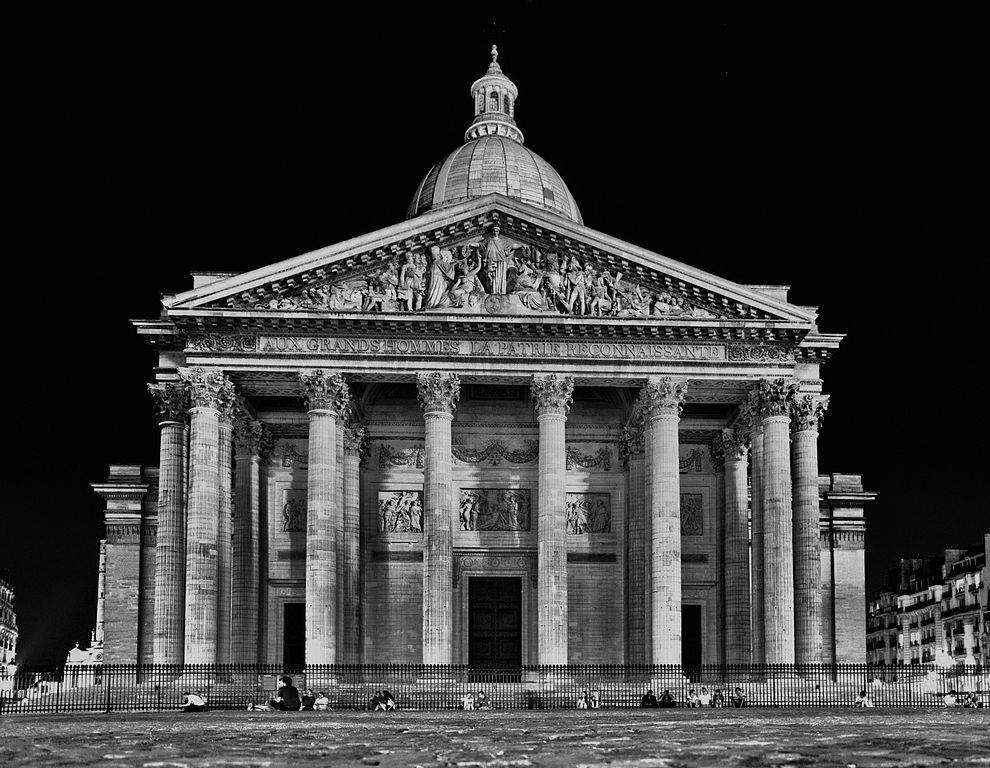It had been since 1924 that the Pantheon in Paris had not welcomed a work by a contemporary artist: now, the mausoleum of French greats (Voltaire, Marat, Rousseau, Victr Hugo, Pierre and Marie Curie, among others, are buried there) is enriched with new works, exactly 100 years after its elevation as a historic monument of France: it was the president of the republic, Emmanuel Macron, who commissioned the works on the occasion of the entry into the Pantheon of writer Maurice Genevoix (Decize, 1890 - Jávea, 1980). They are an installation by Anselm Kiefer (Donaueschingen, 1945) and a sound work by Pascal Dusapin (Nancy, 1955).
The works were unveiled last Nov. 11: for the occasion, Macron said he wanted to "accompany this panthéonisation with a public commission of exceptional value,“ setting himself the goal of ”making the memory of the Great War dialogue with the imagery of contemporary artists,“ thus choosing ”two deeply European artists, deeply marked by the literature, philosophy and history of the First World War." Kiefer was directly inspired by Genevoix’s best-known book, Ceux de 14 (“Those of ’14”), a collection of memoirs of the First World War, and thus created his Des coquelicots et une nuée de plomb (“Poppies and a Cloud of Lead”), an installation consisting of six monumental sculptures kept inside as many glass cases. Using his typical language, Kiefer assembled books, lead, barbed wire, flowers and poppy seeds to commemorate France’s fallen during the war. The showcases were also marked with quotes from Genevoix’s work. Kiefer, true to Genevoix’s idea that nature is the “beautiful counterpart of evil,” created a work where life and destruction, war and harmony, beauty and, indeed, evil mingle and blend through materials of different natures.
Kiefer went even further, however, because along with the installation he also brought two monumental paintings, also inspired by Ceux de 14, which will, however, be exhibited temporarily.
Dusapin, on the other hand, created the work entitled In Nomine Lucis, also as a tribute to the fallen soldiers of World War I, and composed together with the Accentus choir at the Paris Philharmonic. The work is complemented by the recording of soldiers’ names, to concretize Macron’s idea of having soldiers who gave their lives during the war also enter the Pantheon. The names were read by actors Florence Darel and Xavier Gallais. This work is also designed to remain permanent: it will be broadcast through seventy speakers for a few minutes each day.
Before the works of Kiefer and Dusapin, the last work by a contemporary artist to permanently enter the Paris Pantheon (which is instead always open for temporary exhibitions) was Louis-Henri-Bouchard’s monument Aux héros morts inconnus, commissioned from the artist in 1913 to commemorate the fallen of all wars, but not installed until 1924.
Pictured is the Pantheon in Paris. Ph. Credit Ignacio Duarte
 |
| After a century, a work by a contemporary artist returns to the Paris Pantheon |
Warning: the translation into English of the original Italian article was created using automatic tools. We undertake to review all articles, but we do not guarantee the total absence of inaccuracies in the translation due to the program. You can find the original by clicking on the ITA button. If you find any mistake,please contact us.